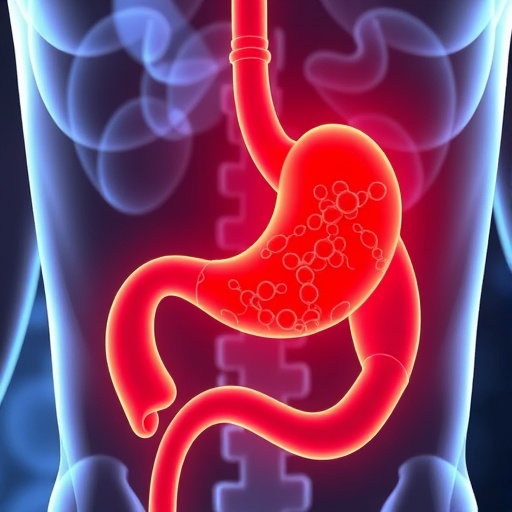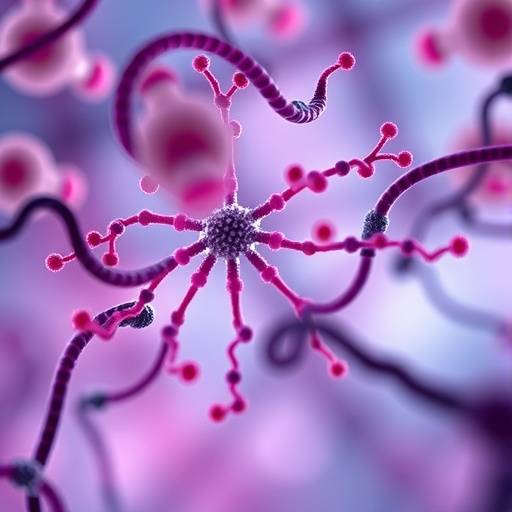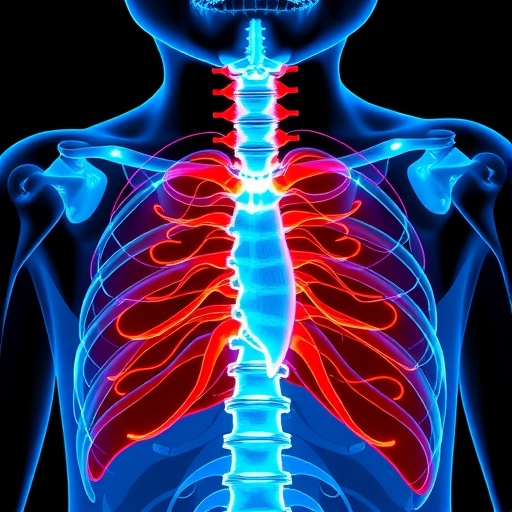Gastric cancer remains a formidable global health challenge, ranking among the leading causes of cancer-related mortality worldwide. Despite advances in medical science, the molecular mechanisms underpinning its initiation and progression have remained largely obscure. Recently, groundbreaking research has elucidated detailed molecular signatures that connect Helicobacter pylori infection—a well-known etiological factor—to the stepwise evolution of gastric lesions culminating in malignancy. Employing state-of-the-art proteomic profiling combined with single-cell RNA sequencing technologies, this comprehensive study has identified a reproducible trajectory of protein changes that delineate infection-driven gastric carcinogenesis, offering promising avenues for early detection and preventive interventions.
The pathogenesis of gastric cancer typically unfolds through a chronic continuum of histopathological changes, beginning with superficial gastritis and gradually advancing to chronic atrophic gastritis, intestinal metaplasia, dysplasia, and eventually adenocarcinoma. Central to this cascade is infection by H. pylori, a bacterium implicated in nearly 90% of non-cardia gastric cancer cases. Historically, therapeutic eradication of H. pylori infection has been the cornerstone for reducing gastric cancer risk, yet the precise molecular events bridging bacterial colonization to neoplastic transformation remained inadequately characterized. Prior investigations tended to isolate singular pathways such as inflammation or immune dysfunction without providing an integrated molecular landscape of disease evolution.
Addressing this significant gap, researchers from Peking University Cancer Hospital & Institute and affiliated collaborators launched a multi-dimensional study integrating high-throughput proteomics and single-cell transcriptomics across a broad spectrum of gastric tissue samples. Published in September 2025 in Cancer Biology & Medicine, the study analyzed 166 gastric tissue specimens from Linqu, a Chinese region with a high incidence of gastric cancer, alongside 99 additional samples from Beijing patients. Over 4,200 proteins were quantitatively profiled, marking one of the most expansive proteomic inquiries into gastric carcinogenesis to date.
From this expansive dataset, 28 protein markers emerged as pivotal players closely associated with H. pylori infection and the malignant transformation of gastric tissue. Notably, proteins such as OLFM4 (olfactomedin 4) and ENO1 (enolase 1) exhibited marked upregulation, while others including GSN (gelsolin) and IGFBP2 (insulin-like growth factor-binding protein 2) were found to be downregulated. Crucially, these protein alterations were not random but followed a consistent pattern correlating with successive stages of gastric lesion progression, underscoring their fundamental role in carcinogenic processes.
To decipher cellular heterogeneity underpinning these proteomic shifts, the team employed single-cell RNA sequencing on approximately 135,000 gastric epithelial and stromal cells spanning disease stages from normal mucosa to intestinal metaplasia and cancer cells. This transcriptomic analysis revealed stage-specific gene expression dynamics for the protein-encoding genes, linking molecular changes at the single-cell resolution to macroscopic lesion development. Such integrative omics approaches bolster confidence that these protein signatures reflect true biological drivers rather than superficial epiphenomena.
Recognizing the potential clinical impact, the researchers constructed tissue-based and circulating protein panels to stratify patients according to their gastric cancer risk. The tissue panel incorporated 15 proteins whose expression profiles could categorize patients into risk quartiles, with the highest quartile exhibiting an over sevenfold increased odds of neoplastic progression compared to the lowest quartile. This powerful stratification tool offers a foundation for personalized surveillance and management protocols, enabling clinicians to prioritize high-risk individuals for closer monitoring or interventional therapies.
Extending the relevance of their findings to population-scale contexts, the investigators validated a four-protein circulating blood panel comprising OLFM4, ENO1, GSN, and IGFBP2 using plasma samples from the UK Biobank cohort, which includes 48,529 participants. Individuals identified as high risk via this circulating panel were nearly four times more likely to develop gastric cancer over follow-up compared to those in the lowest risk group. This non-invasive biomarker panel presents a compelling opportunity to revolutionize gastric cancer screening by facilitating broad, population-level risk stratification without the burdens associated with endoscopic procedures.
The implications of this research are profound, as it not only elucidates previously unclear molecular pathways connecting H. pylori infection to gastric carcinogenesis but also lays the groundwork for impactful clinical translatability. Integrating proteomic biomarkers with single-cell transcriptomics and longitudinal follow-up, the study delivers a comprehensive molecular narrative of disease progression. This paves the way for novel prevention strategies aimed at intercepting gastric cancer at its earliest, most curable stages.
Dr. Wenqing Li, the senior author, emphasized the transformative potential of these findings: “By mapping the proteomic and transcriptomic changes throughout gastric lesion development, we have unveiled consistent protein markers that illuminate the biology of H. pylori-induced carcinogenesis. These biomarkers are poised to become invaluable tools for risk stratification, enabling targeted surveillance and early intervention in high-risk populations.” Such precision medicine approaches are urgently needed to overcome current screening limitations, especially in resource-constrained settings where endoscopy access is limited.
From a public health perspective, the development of blood-based biomarker panels could democratize gastric cancer prevention, offering a minimally invasive, cost-effective means to identify individuals needing further diagnostic assessment. This contrasts with current endoscopic screening strategies that, while effective, are invasive, expensive, and challenging to implement at scale. Consequently, widespread adoption of validated circulating biomarkers has the potential to significantly reduce gastric cancer incidence and mortality worldwide.
Beyond clinical screening, the identified protein signatures provide a valuable framework for future therapeutic exploration. Characterizing how these proteins function in mediating infection-driven tissue remodeling and neoplastic transformation may uncover novel drug targets capable of disrupting the carcinogenic process. Interventions aimed at modulating these molecular pathways could complement existing eradication therapies and immunomodulatory strategies, leading to integrated multi-modal prevention regimens.
In conclusion, this comprehensive proteomic and transcriptomic study represents a paradigm shift in understanding the molecular genesis of gastric cancer from H. pylori infection. By delineating a reproducible trajectory of protein alterations across tissue and circulation, it offers groundbreaking tools for early diagnosis, risk stratification, and personalized prevention. As these biomarkers advance through prospective validation and clinical translation phases, they hold promise to substantially diminish the global burden of gastric cancer through earlier detection and targeted intervention.
Subject of Research:
Gastric cancer, Helicobacter pylori infection, proteomic profiling, single-cell RNA sequencing, molecular biomarkers, gastric lesion progression
Article Title:
Proteomic profiling and scRNA sequencing identify signatures associated with Helicobacter pylori infection and risk of developing gastric cancer
News Publication Date:
September 4, 2025
Web References:
https://www.cancerbiomed.org/content/22/8/946
References:
DOI: 10.20892/j.issn.2095-3941.2025.0077
Image Credits:
Cancer Biology & Medicine
Keywords:
Gastric cancer, Helicobacter pylori, proteomics, single-cell RNA sequencing, biomarker panels, gastric lesions, cancer progression, early detection, risk stratification, molecular signatures
Tags: adenocarcinoma developmentcancer risk factors related to infectionchronic gastritis and cancer progressionearly detection of gastric cancergastric cancer pathogenesisgastric lesions and malignancyHelicobacter pylori infectionmolecular mechanisms of gastric cancerpreventive interventions for gastric cancerproteomic profiling in cancer researchsingle-cell RNA sequencing in oncologyunderstanding cancer evolution through molecular signatures





